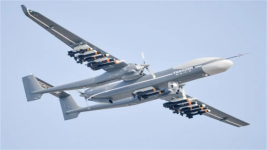Some people here live in the past and are ignorant of the progress that China made in a whole slew of dual-use technology like Gas Turbine China is now ahead in Gas Turbine according to ASPI
In particular, China has made strides in dual-use technologies that have possible military applications. There are 24 categories classified as being at high risk of being monopolized by a country, including radar, satellite positioning and drones.
When it comes to citations related to hypersonic detection and tracking, China has a 73% share, the U.S. has 13% and the U.K. 3%. For advanced aircraft engines, China leads with 63% while the U.S. trails at 7%.
China now global leader in 90% of critical tech research: think tank
China holds a wide lead in research on advanced aircraft engines, among other areas, according to the Australian Strategic Policy Institute's...
Here is the video that explains the genesis and development of the WS10 engine and the variants WS 10B, and WS 10C, and Why the latest variant already approaches the initial spec of WS 15. The number may be doubtful but the gist of the story is correct. It is 2 different engines for 2 different applications. He also confirms the requirement for 5th Gen fighters as Stealth, supercruise,350 Deg situation awareness, AESA radar, and EW capability. WS 10C engine is now probably 95% of F119 Thrust but the combination with lifting body, LERX, Delta wing, and Canard it approaches the maneuverability of F-22 even without thrust vectoring
WS 15 spec was upgraded and it is intended for J20 B and not for J20 A, as they are now fitted with WS 10C










